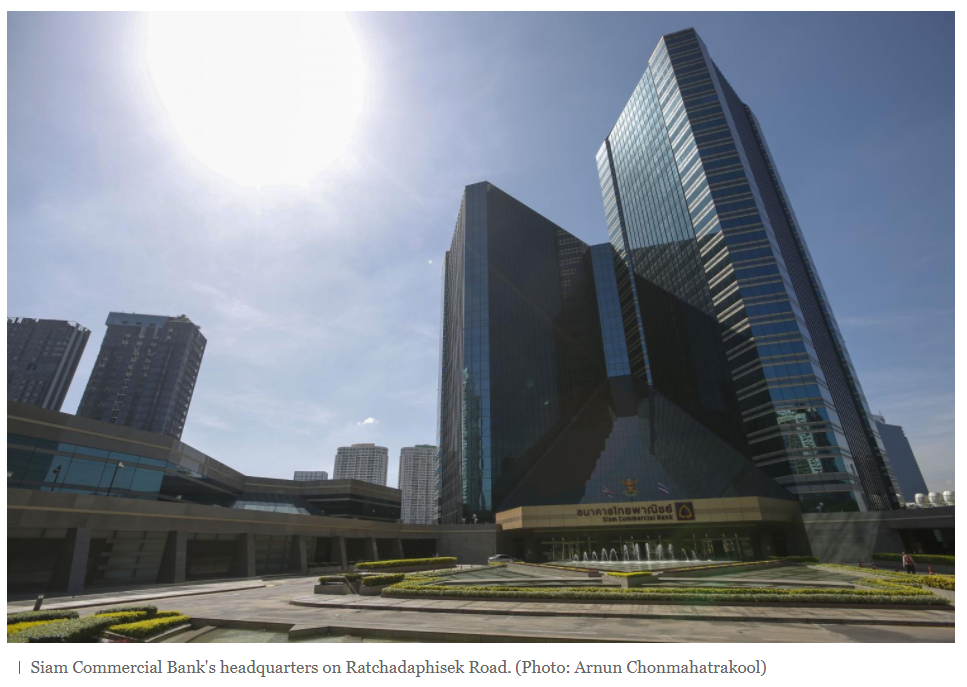Thailand: SCB eager to usher in digital transformation
Siam Commercial Bank (SCB) is planning new business strategies under what it calls the three generations of financial services, in preparation for a changing banking landscape in the post-Covid era.
SCB, Thailand’s oldest bank and fourth largest lender by total assets, strengthened its infrastructure base in all areas because of the pandemic.
The bank aims for growth from S-curve sectors amid deteriorating income from traditional banking services.
“Sluggish business activities during the crisis make it an opportune time to speed up the bank’s digital transformation, develop technology, improve employee skills and strengthen the organisational culture,” chief executive Arthid Nanthawithaya said in an exclusive interview with the Bangkok Post.
CHANGING LANDSCAPE
Income from traditional banking business has declined in line with changing consumer behaviour in the digital era. The Covid-19 outbreak was a key factor in the shift of the business landscape.
The bank needs to speed up its digital transformation and search for new growth areas, he said.
SCB plans to concentrate on the financial markets rather than the banking market, said Mr Arthid. Given the bigger area served by financial markets, the move should provide the bank greater opportunities to search for a blue ocean market with lower competition and higher returns, instead of the red ocean of the banking sector, he said.
This strategy calls for three models, or as Mr Arthid calls them three generations of financial services in the future.
Mr Arthid says SCB is planning for business operations in three new models or what he calls the three generations of financial services.
Traditional banking is defined as the first generation, and is seen as a red ocean market because income from traditional banking activities has been declining. This generation needs to be downsized because of lower demand, he said.
SCB has been shifting to the second generation of digital financial services, deemed a blue ocean, which uses clean and lean infrastructure to control operating costs and improve profitability, said Mr Arthid.
The third generation features fully digital, technology-based services, covering digital assets and blockchain technology.
SCB has yet to disclose its second and third-generation business models as it awaits the Bank of Thailand’s approval for such operations, he said.
MIX OF STRATEGIES
The bank is open to several business strategies or models as opportunities to expand into financial services become apparent. It is open to both organic and inorganic growth covering partnerships, mergers and acquisitions, investments and spin-off subsidiaries, said Mr Arthid.
SCB Group also plans to offer non-financial services to expand into finance-related services. Robinhood, an online food delivery platform, is a successful example of a non-financial service under the SCB umbrella.
Robinhood has seen its user base grow to 1 million after operating for one year, in part because it does not charge a gross profit fee or commission to restaurants.
Robinhood plans to expand into the online travel agent service, maintaining its unique strategy of not charging commission fees to operators.
“Foreign investors are interested in investing in Robinhood, so the platform may offer shares to both local and foreign investors, expanding to regional markets in the future,” he said.
MARGINAL GROWTH
The business has suffered from the pandemic, in particular the third wave, said Mr Arthid.
Given the risk factors, the bank may miss some of its growth targets this year, he said.
SCB aimed for total loan growth of 3-5% this year, net interest income growth of 3-3.2%, with non-interest income flat. The bank expects to control its non-performing loan (NPL) ratio in a range of 4-4.5%.
Although there were positive signs in the first quarter this year, SCB’s business operations are going to be impacted significantly in the second and third quarters, said Mr Arthid.
Business activities are forecast to pick up in the fourth quarter, supported by the government’s vaccination plan, he said.
“We may book flat or marginal growth for total loan expansion this year,” said Mr Arthid.
In the first quarter this year, SCB reported strong loan growth of 8.1% from the end of last year.
The bank recorded a net profit of 10.1 billion baht, rising 9.05%, year-on-year.
However, its NPL ratio increased to 3.79% as of March, up from 3.68% in December last year.
Assuming business activity picks up in the fourth quarter this year, supported by the government’s mass vaccination scheme, the bank is prepared to offer new loans to commercial customers for business recovery, he said.
SCB supported commercial liquidity through subsidies as part of a debt relief programme during the first wave of the outbreak, said Mr Arthid.
“Apart from subsidised measures, recovery measures are needed to help keep businesses afloat,” he said.
“SCB is ready to offer new loans.”
STRONG CUSHION
In 2020, the bank set aside a massive loan-loss provision to cope with economic uncertainties during the pandemic.
Though reserves peaked last year, the bank has been setting additional provisions every month from the beginning of this year.
“Setting higher loan-loss provisions is the new normal for SCB. With a strong cushion, the bank is ready to support customers, both for debt restructuring and business recovery. If customers survive, the bank survives too,” Mr Arthid said.
As of March 2021, the bank’s capital adequacy ratio was 18.2%.
SCB helped customers with debt restructuring during the first two waves of the outbreak totalling 500 billion baht, in terms of customers’ outstanding loans, he said.
This debt declined to 200 billion baht before the third wave of infections hit.
Source: https://www.bangkokpost.com/business/2126667/scb-eager-to-usher-in-digital-transformation


 English
English





